YGGDRASIL
NINE WORLDS
Yggdrasil Nine Worlds is a virtual online environment inspired by Norse mythology and cosmology. Ancient Norse myths depict Yggdrasill as a giant tree that sprang forth in the primordial void unifying nine distinct worlds. It is a mighty trunk that rises at the geographical center of the Norse spiritual cosmos, and the nine worlds are arrayed around it and held together by its branches and roots connecting the various parts of the cosmos to one another. The idea of universal balance and ancient architecture of Yggdrasil was the starting point for constructing a speculative digital world. Selected Nordic-Baltic artists contributed to inhabit nine thematically distinct worlds. The virtual exhibition is a 3D interpretation of these worlds, along with the sound pieces made by different artists in a navigational environment with positional audio to create an immersive online experience.
![]()
Participating artists: Anna-Karin Berglund (Sweden), Simone Ghetti (Norway), Petri Kuljuntausta (Finland), Jacob Fosgrau (Denmark), Gustavs Voldemārs Lociks (Latvia), Joonas Siren (Finland), Anni Nöps (Estonia), Daina Dieva (Lithuania), Sarah Badr (Latvia)
Asgard re-imagined by Anna-Karin Berglund from Sweden is the home of the Æsir, a ruling class of deities that includes Odin, Frigg and Thor. Snorri Sturluson writes that “Asgard is a land more fertile than any other, blessed also with a great abundance of gold and jewels.” The world is surrounded by an incomplete wall, attributed to a stone mason that Thor struck down when the gods learned he was a Hrimthurs in disguise.Asgard is also the location of Valhalla “hall of the slain”, an enormous feasting hall ruled over by Odin. In Valhalla, the dead join the masses of those who have died in combat known as “Einherjar” as they prepare to aid Odin during the events of Ragnarök.
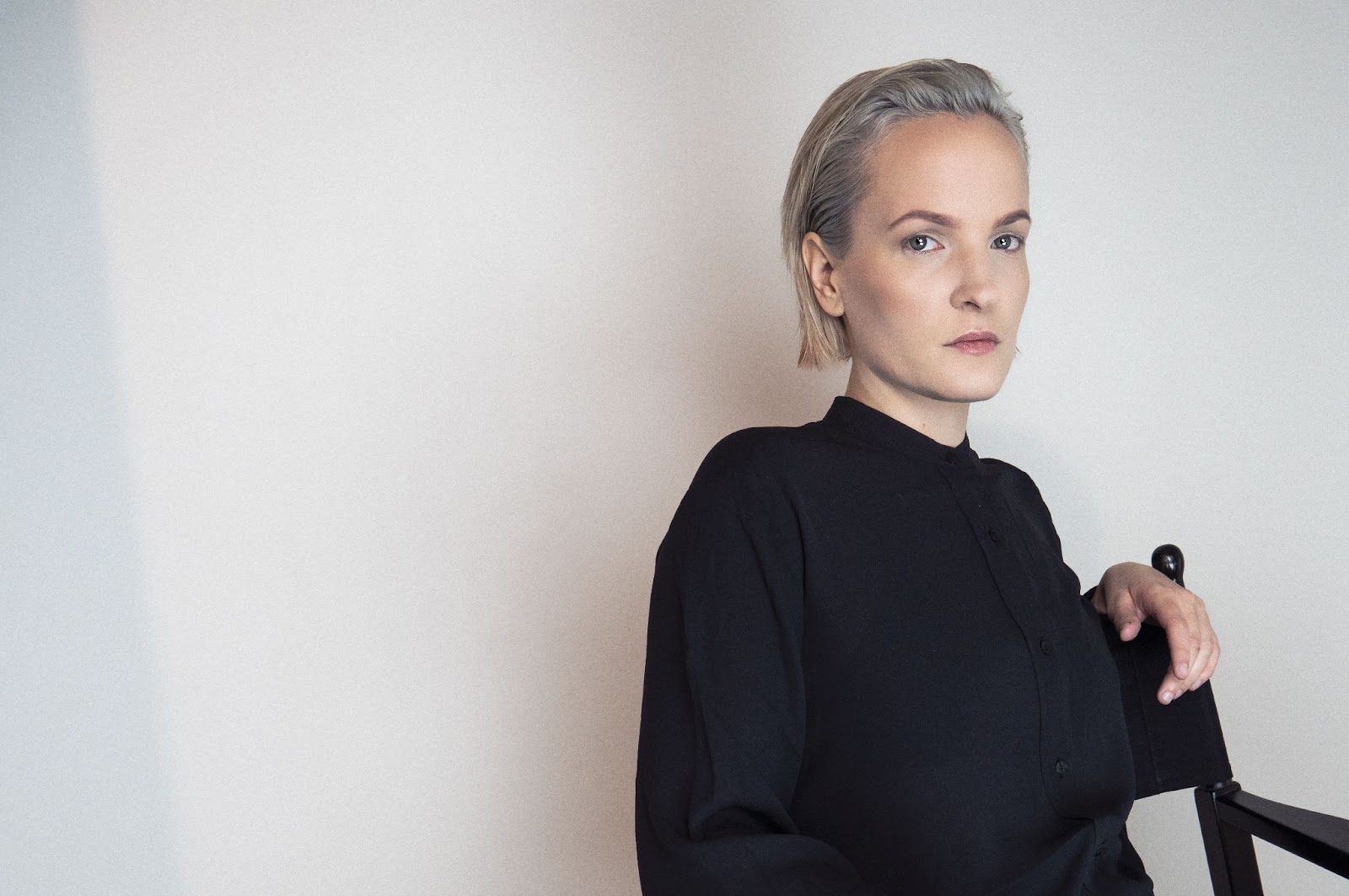
Behind the name AKB resides instrumentalist Anna-Karin Berglund from Gävle, Sweden. Her debut album ”Marianergraven” was released on February 28th 2020 (on Lamour Records) and it is her own take on the ambient genre, with melodies moving slowly, forming a menacingly areal atmosphere, where the soaring laments are able to float freely across the sonic panorama. The musical origins of this album comes from an avid fascination with the ocean and its secrets. The idea of how the pressure and darkness of the depths may sound and the unknown mystery attached to the Pacific abyss of the Marianas trench evokes both a calmness and a breathtaking feeling of bottomlessly sinking into the darkness way down deep. She utilizes the electronic tonalities from syntheses, loops and effects to create a slowly growing and floating ambient structure, which is both melodic and dissonant combined.
Vanaheim, re-imagined by Simone Ghetti from Norway, is the home of the Vanir, a group of gods associated with fertility, wisdom, and the ability to see the future. No descriptions are given for Vanaheim but it is assumed to be a fertile and pleasant realm of magic and light. Simek writes, “The Vanir are in particular fertility gods who were called upon for good harvests, sun, rain, and good winds especially by the agrarian population, and for favorable weather conditions by the seafarers and fishermen” (350). Freyja – one of the most popular Norse deities - presided over her own realm of the dead somewhere in Asgard called Folkvangr (“Field of the People”) which was quite probably as pleasant as Vanaheim, her home realm.
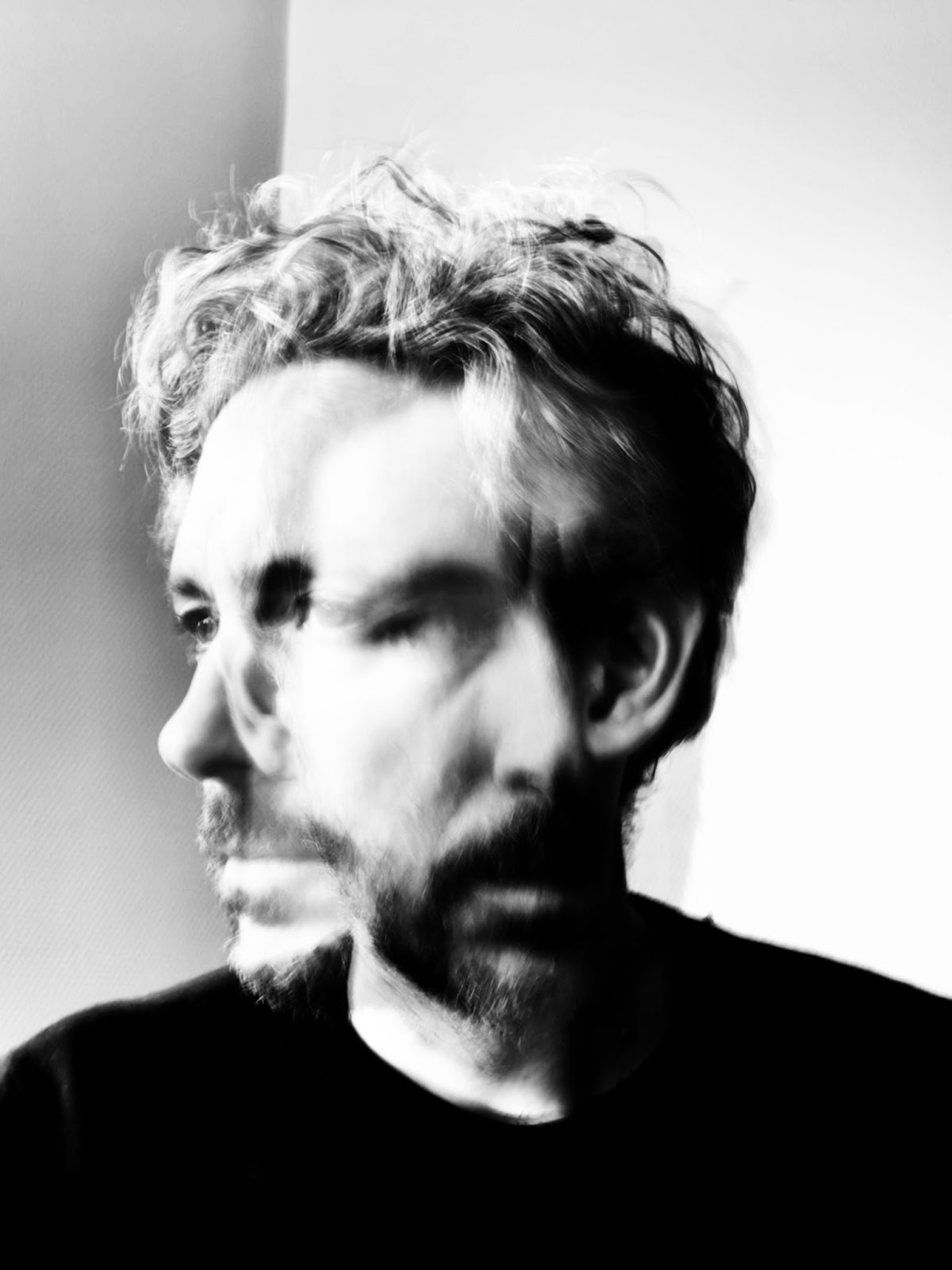
Simone explores textures that lay at the intersection between harmony, dissonance and noise. His music takes the form of long pieces that evolve over time and create a space where the listener is challenged to establish their own relationship with sound. Each project takes its initial starting point from a framework that is established ahead of time. The framework consists of a limited set of tools: electronic and/or acoustic instruments. Through an iterative process centered around improvisation, the limits of the framework are tested to develop a vocabulary of textural sounds and gestures. Recordings of the improvisations form the raw materials. Using a subtractive process, the recordings are threaded together to delineate the presented work.
Simone began studying piano at age four. In high school he taught himself to play guitar and electric bass. He received a Bachelor's degree in Arts with a focus on classical piano. During graduate studies in architecture, he began experimenting with a 4-track cassette recorder and a few instruments. Curiosity led the way in exploring music, sound and recording techniques that form the basis of his artistic process. Simone has played in a number of small bands and released music under a range of pseudonyms. In 2020, Simone began releasing music under his own name. Between 2020 and 2022 he has released three albums. His last album, Strata, was released both digitally and on cassette by Case Records in Oslo, Norway. Simone is currently based in Bergen, Norway.
Álfheim re-imagined by Jacob Fousgrou from Denmark, is loosely translated as “Land of the Elves” or “Elfland” and as the name suggests, is home of the Jósálfar light elves ruled by the Goddess Freya. Text describing Álfheim is scarce, but the elves themselves have been mentioned in a poem as more “beautiful than the sun”. Alfheim also exists in the heavens, not far from Asgard, and was the home of the light (or bright) elves and, after Snorri, all the elves. It was presided over by the Vanir god Freyr who was one of the hostages sent from Vanaheim to Asgard at the conclusion of the war. The elves are magical beings, bright and beautiful, who inspired the arts, music, and creativity in general. Scholar John Lindow (and others) has noted that Alfheimar was the geographic locale between the mouths of the rivers Gota and Glom at the border between Sweden and Norway and that people from this region were considered “fairer” than those in other places. The mythological Alfheim is therefore thought to be inspired by this region but this claim has been challenged. The realm is not described clearly in Norse literature but, owing to the nature of the elves, is thought to be quite lovely.
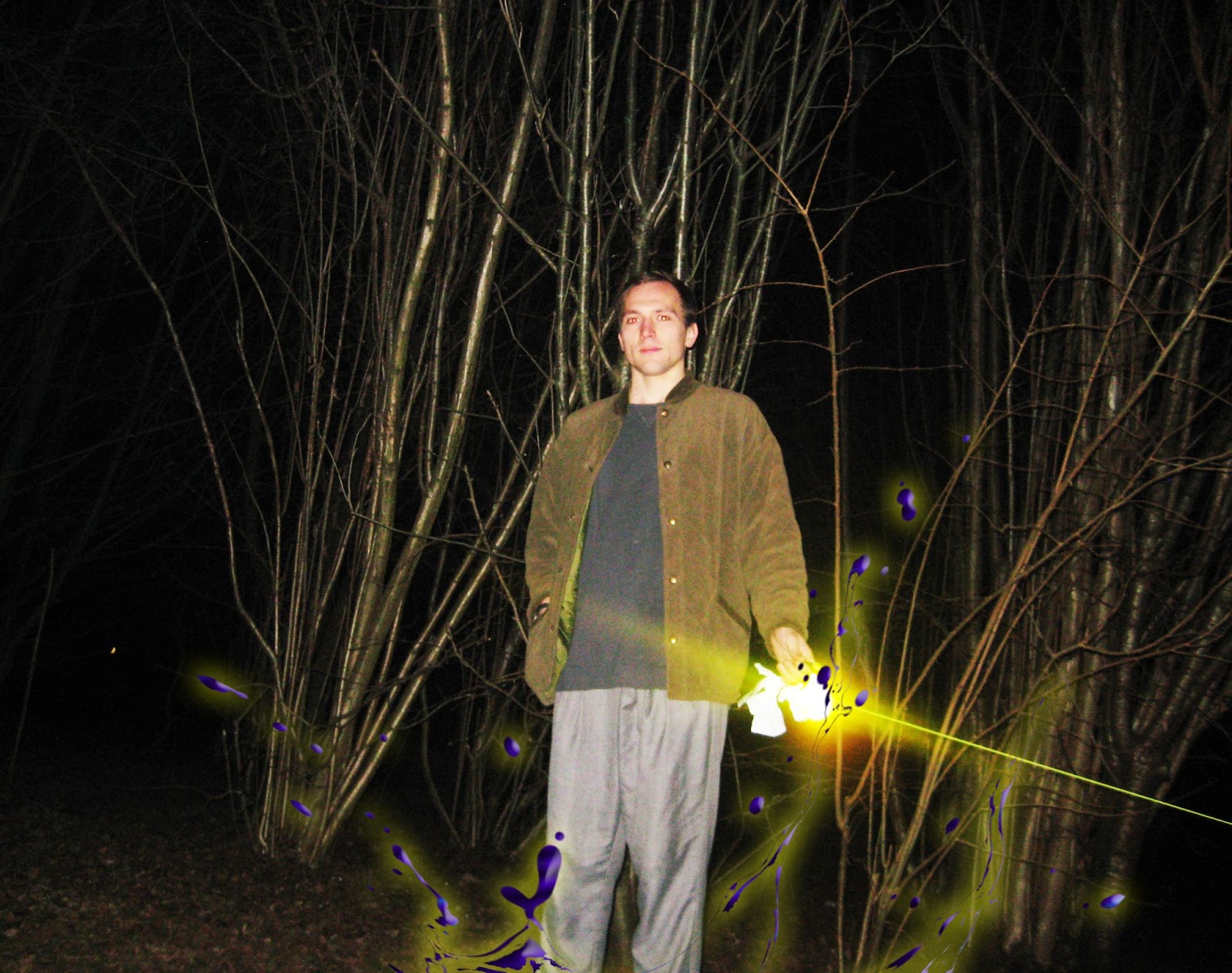
Jacob Fousgrou aka jjjacob is a Copenhagen-based artist who has set out to explore the implications of electronic music on a personal and societal level. His sincere endeavors into his artistry began in 2017 during his rehabilitation period after getting a stroke with severe physical and mental consequences, in which music became a self-therapeutic tool to process emotional material. In the tension between the intimate and emotional on one side and the violent and chaotic on the other, jjjacob's compositions flourish as the soundtrack to some forgotten dream world. Through sound collages of distorted samples, grandiose synth melodies, and percussive beats, he portrays his reflections about himself and the world around him in the nonverbal ways of music. And even though his style ranges from meditational ambient floaters to aggressive club-inspired bangers, he has found his personal blueprint for sound and aesthetics.
Niðavellir, re-imagined by Finnish artist Joonas Siren, translates as a “new moon” or “the wane of the moon” and is the realm of the Dwarfs, a race of master smiths and craftsmen who reside underground working the mines and forges. (Text also associates the realm to that of the black/dark elves). The realm of Nidavellier/Svartalfheim was below Midgard, deep in the earth, and the home of the dwarves who toiled there at their forges. It is a dark, smoky, place lit only by the fires from the forge and the torches on the walls. The gods seem to have decreed the realm of the dwarves based on their origin as given by Snorri in the Gylfaginning.
Next, the gods took their places on their thrones. They issued their judgments and remembered where the dwarves had come to life in the soil under the earth, like maggots in flesh. The dwarves emerged first, finding life in Ymir's flesh. They were maggots at that time, but by a decision of the gods they acquired human understanding and assumed the likeness of men, living in the earth and the rocks.
The dwarves were associated with craftsmanship and magic. They created Thor's hammer Mjolnir and Odin's spear, as well as the god Frey's magic ship which can be folded up and carried in his pocket. They are also responsible for the Mead of Poetry which Odin steals from the giants and gives to the gods who then inspire poets, through drink, to create their verse.
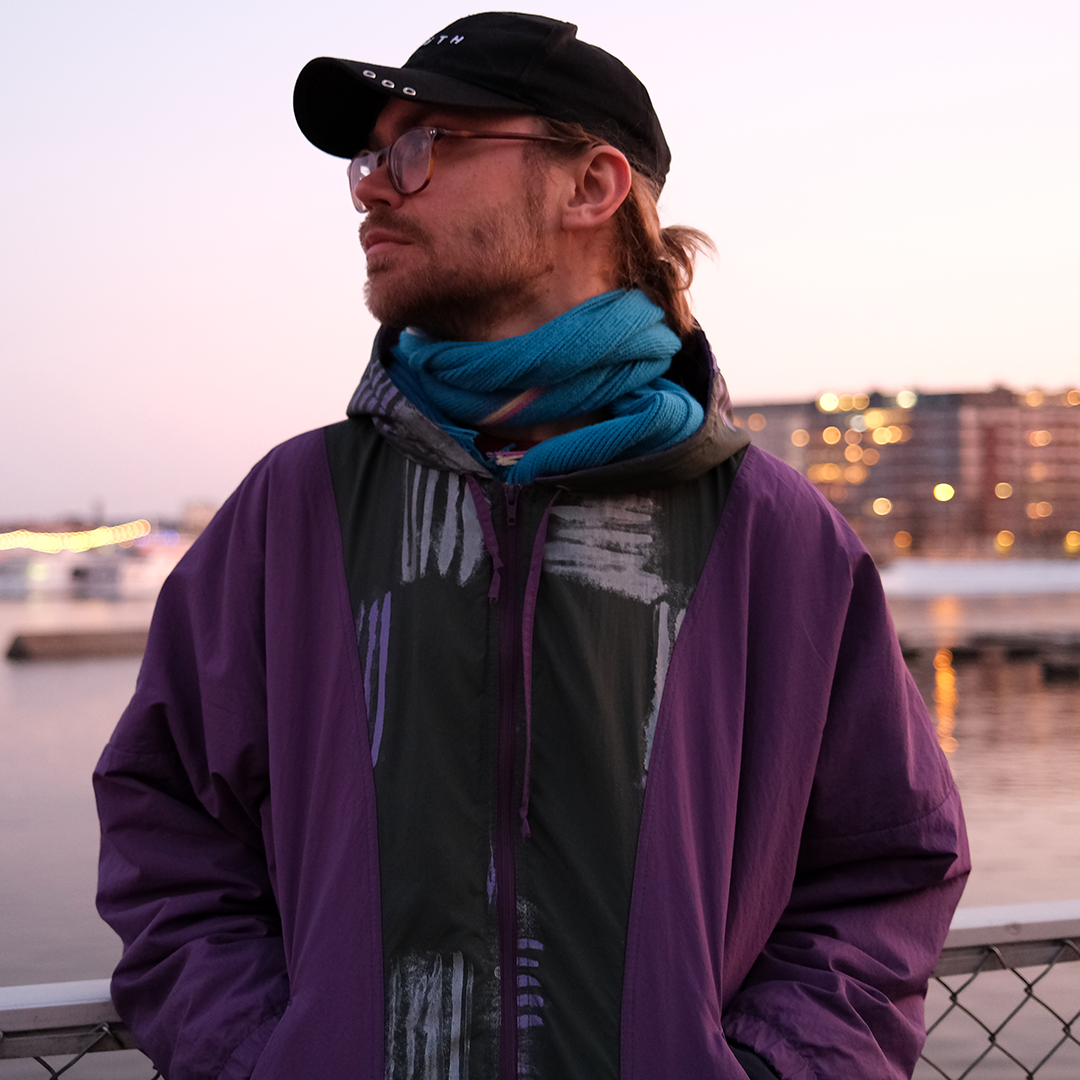
Constantly mutating rhythms and sharp digital textures shape the sound of Forces, an electronic music project of Finnish Interdisciplinary artist Joonas Siren. Different live-coding and processing techniques are used to make dense atomized swirls; electronic and sometimes chaotic abstract oceans of sound. Forces' music has been released on Infinite Machine, Gin & Platonic, Genot Centre, Conditional and Bio Future Laboratory.
Muspelheim, re-imagined by Estonian artist Anni Nöps, is a realm of fire and was the first elemental world to emanate from the primordial void of Ginnungagap. The world is ruled by Surtr, a jötunn giant who plays a major role during the events of Ragnarök where the flames that he brings will engulf Midgard. Muspelheim is the primordial realm of fire, according to Snorri, which was instrumental in the creation of the world. The Fire-Giant Surtr lives in this realm and will emerge at Ragnarok, the twilight of the gods, to destroy Asgard and everything else. Scholars in the modern day, however, disagree with Snorri's interpretation and believe that Muspell was originally a giant from a fiery world whose only function in original Norse mythology was the part he would play at Ragnarok.
John Lindow, for example, notes how, “in eddic poetry, Muspell is associated with groups, Muspell's peoples and Muspell's sons. Both refer to the hordes of evil beings that will invade the world at Ragnarok”. Simek agrees with this, citing Muspell as most likely the name for a giant and meaning roughly “the end of the world”. As with many of the original Norse concepts, however, Snorri's interpretation changed how Muspell or Muspelheim was originally viewed and for the past few hundred years it has been understood as a place of fire, not an entity.
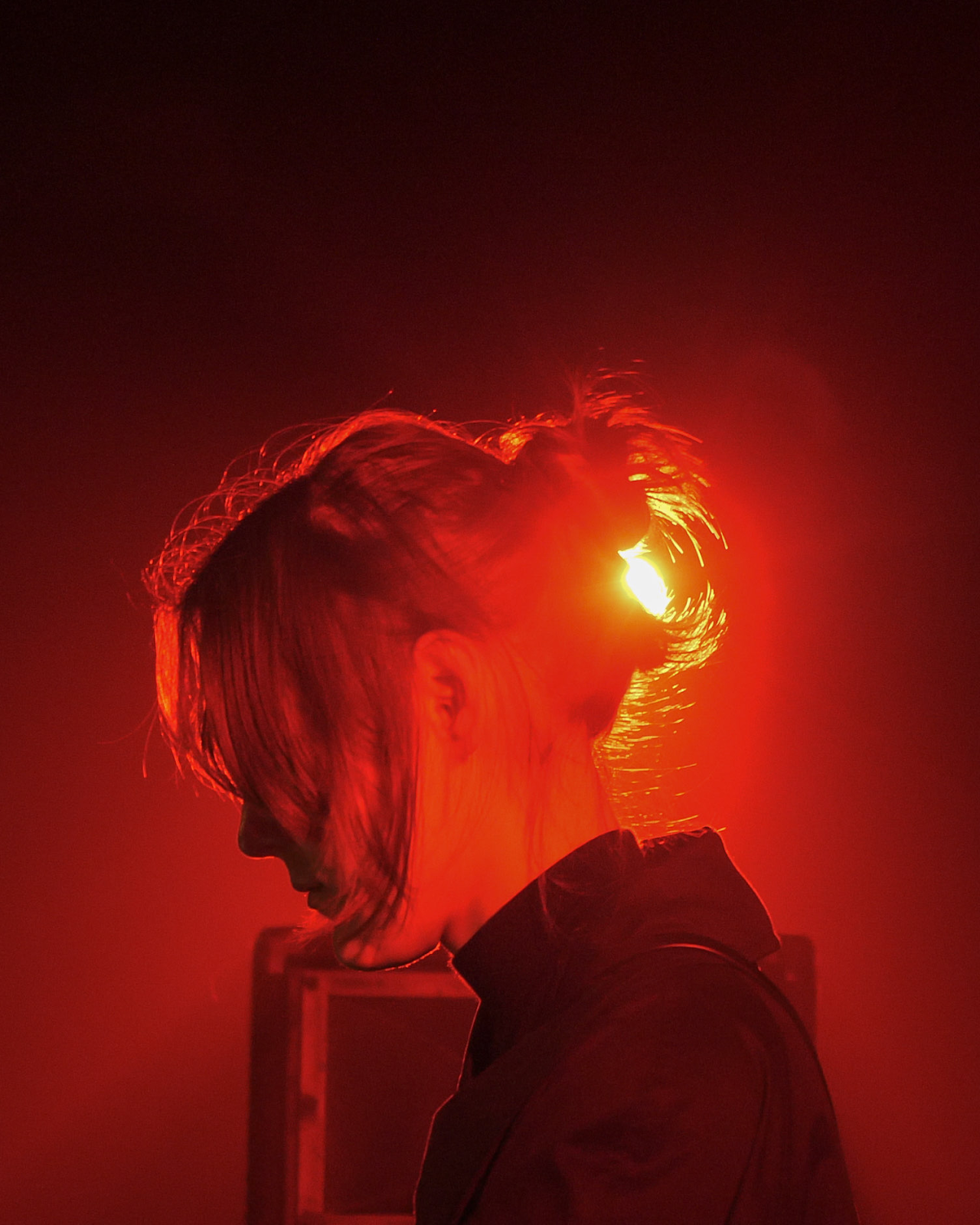
Anni Nöps is a sound artist, electronic composer from Estonia. Her sonic palette is visceral, interlacing ghostly drone, floating melodies, hard hitting percussion and tactile noise. She has performed and presented her sonic works at arebyte gallery (London), FIBER Festival (Amsterdam), Sonic Acts Festival (Amsterdam), Rewire Festival (the Hague), ICST(Zürich) and has collaborated with contemporary choreographers at ICK/Veem Theater (Amsterdam) and Stuttgart Ballet.
Midgard, re-imagined by a Finnish artist Petri Kuljuntausta, is a realm inhabited by a race known as humans, surrounded by an impassable ocean encircled by the great sea serpent Jörmungandr. The gods of Asgard journey to Midgard via the Bifröst, a burning rainbow bridge that ends in heaven at Himinbjörg, the residence of the god Heimdallr. According to the Eddas (Icelandic literary works), Midgard will be destroyed at Ragnarök, the battle at the end of the world. Jörmungandr will arise from the ocean, poisoning the land and sea with his venom and causing the sea to rear up and lash against the land. The final battle will take place on the plane of Vígríðr, where Midgard and almost all life on it will be destroyed and sink beneath the waves. In the aftermath, Midgard will rise again, fertile and green in a new creation cycle.
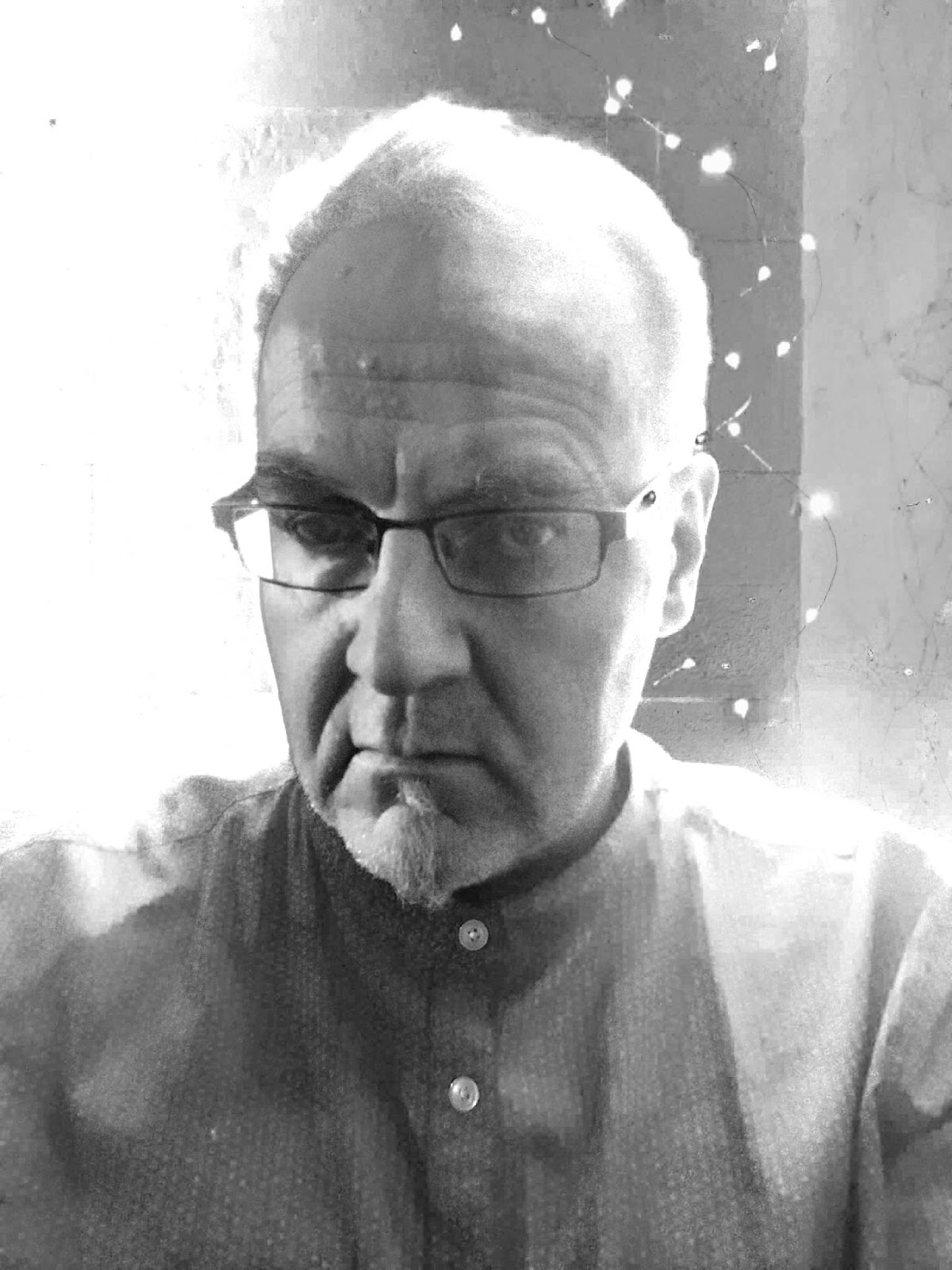
Petri Kuljuntausta works as a Composer, Sound Artist, Musician and Writer-Researcher. As an artist he works with environmental sounds and live-electronics, and creates sound installations for galleries and museums. Kuljuntausta has performed music for an underwater audience, improvised with birds, and made music from whale calls and the sounds of the northern lights. Kuljuntausta has published three books on electronic music and sound art.
Over 130 electroacoustic compositions and sound works by Kuljuntausta have been published on various record labels in Europe, Australia, India, and the USA. Kuljuntausta is Adjunct Professor of Sound Art and Electronic Music and a visiting lecturer at the University of the Arts Helsinki and Aalto University Espoo.
Hel, re-imagined by a British-Egyptian artist and composer based in Riga Sarah Badr, is also referred to as “Helheim '' or “The Realm of Hel”. It is an underworld for many of the dead, ruled by the deity “Hel”. Unlike the Christian form of hell, this Norse underworld is more a continuation of life elsewhere, neither a place of eternal bliss nor one of endless torment. Hel (sometimes known as Helheim) is a dark, gloomy realm presided over by Hel, daughter of Loki, and sister of the Midgard serpent and Fenrir the wolf. When Loki's children were born, Odin knew they would cause trouble and so sought to place each one where it would do the least harm. He placed the Midgard serpent in the seas which surround the world, had Fenrir chained up, and threw Hel into a dark realm beneath the roots of Yggdrasil. This realm was then surrounded by a wall with only one gate and could only be reached by traveling downhill on a long, long path (known as Helveg — the way or road to Hel) and crossing a dangerous river of weapons.
Hel herself is depicted as a giantess, glum and brooding. For reasons which are unclear, her realm became associated with the souls of the dead which did not die in battle and, initially at least, those who died from disease or old age. In time, it became the most populous realm of the dead and most people who died were thought to travel to Hel's dark realm where they wandered in a kind of twilight but, otherwise, did more or less what they had done while alive. Determining who went to Hel's realm or why is not easy as the great hero-god Baldr, among others, is said to have gone to Hel when, considering his status, he should have gone to Valhalla.
![]()
Sarah Badr is a British-Egyptian artist and composer based in Riga. She explores emergence in nature and nascent technologies through building complex systems for graphics and audio generation. Being a classically trained multi-instrumentalist who became fascinated by experimental music later in life, her work fuses together synthesis and manipulation, live sampling, field recordings, and improvisation to create immersive experiences that transcend both genre and geography. She is an Oram Award recipient for innovation in sound, music, and related technologies. Her critically acclaimed album, Excision After Love Collapses, marks nearly a decade of independent, self-published work.
Niflheim, re-imagined by a Lithuanian artist Daina Dieva, is translated as “Abode of Mist” or “Mist World”, is a realm of primordial ice and one of the first to emanate out of Ginnungagap in the creation story of the Yggdrasil tree. The word “Niflheim '' is only found in the works of Snorri and in the Hrafnagaldr Óðins. Niflheim, along with Muspelheim, is the oldest of the nine realms, the primordial land of ice, mist, and snow, from whence all life began. Snorri equates Niflheim with Niflhel which gave rise to his understanding of Niflheim as the location of Hel's realm. If Niflhel did exist in Norse cosmology prior to Christianity – as it seems to have - there is no mention of it in Niflheim and it was probably an abode of the dead comparable to Tartarus in Greek mythology or the later depictions of Hel: a dark, dreary place where the souls of the dead are confined. It may have been located beneath Niflheim. All these nine realms coexisted, operating together, and would do so until the day of Ragnarok. Niflheim, however, has nothing to do with the realm of the dead per se. It is a cold and misty realm where no one lives, not even the Frost Giants. Odin is said to have thrown Hel into Niflheim and to have then given her power over the dead and the lives of those in the Nine Realms but it is thought that she would have passed through Niflheim and into Niflhel (which just means “dark realm of Hel”) where she then ruled.
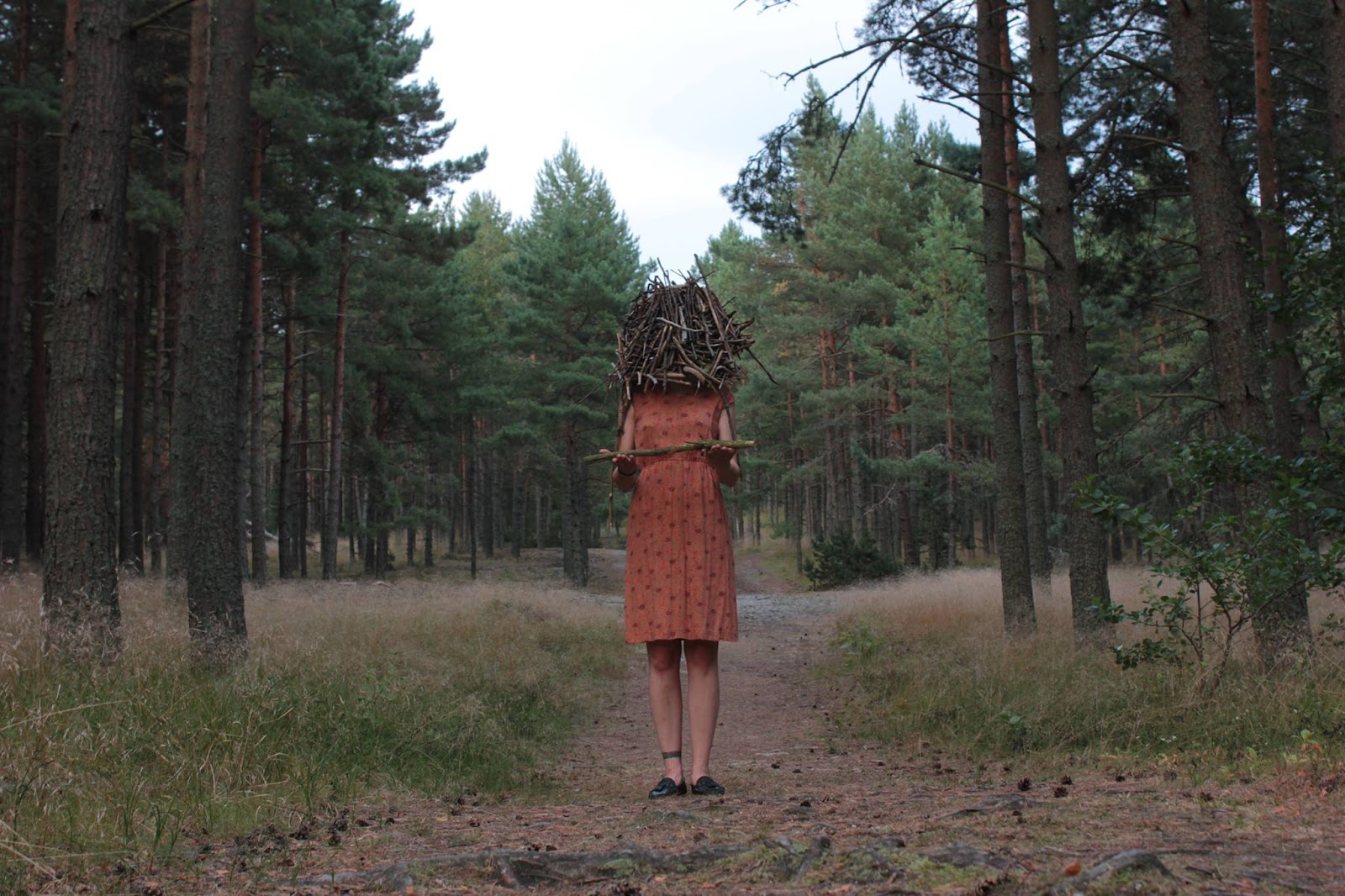
Daina Dieva is a performance artist, musician, sound designer, curator, translator, filmmaker and a screenwriter. She’s fluent in six languages, so in her music she often explores various forms of communication and tackles a wide array of topics that vary from notions of individual or collective identity, through to destruction, the balance of power and the limits of the human body. Her performances resemble a journey, a ritual of private transformation. In her music, Daina Dieva creates reverberating, atmospheric soundscapes, emerging not only out of electronic media but from acoustic sources too. She samples vocals and uses the recordings of the surrounding world, which she later incorporates into a deep drone sound aesthetic and creates sound blocks of dreamlike dark ambient and post-folk.
Jötunheimr, created by Latvian artist Gustavs Voldemārs Lociks, is the homeland of the Jötnar, the giants in Norse mythology. In the Eddas the realm is described as having dark forests and mountain peaks where winter never eases its frosty grip. It was here in Jötunheimr that Odin sacrificed an eye in exchange for wisdom at the well of Mímisbrunnr. Jotunheim (sometimes referred to as Utgard) is the realm of the giants and Frost Giants and is located near both Asgard and Midgard. Jotunheim/Utgard was considered beyond the realm of order, a primordial place of chaos, magic, and untamed wilderness. Loki, the trickster god of mischief, came from Jotunheim but lived in Asgard. Jotunheim was considered best avoided but there are a number of tales involving gods of Asgard purposefully traveling there.
It was separated from Asgard by the river Iving, which never froze and was difficult to cross, but Odin traveled to Jotunheim to Mimir's well of wisdom and Thor also went there to the stronghold of the giant Utgarda-Loki. Anything could happen to a person in Jotunheim as the tale of Thor and Utgarda-Loki makes clear: nothing Thor experiences on his journey is what it appears to be and, at the end of the story, the stronghold and everyone in it disappears.
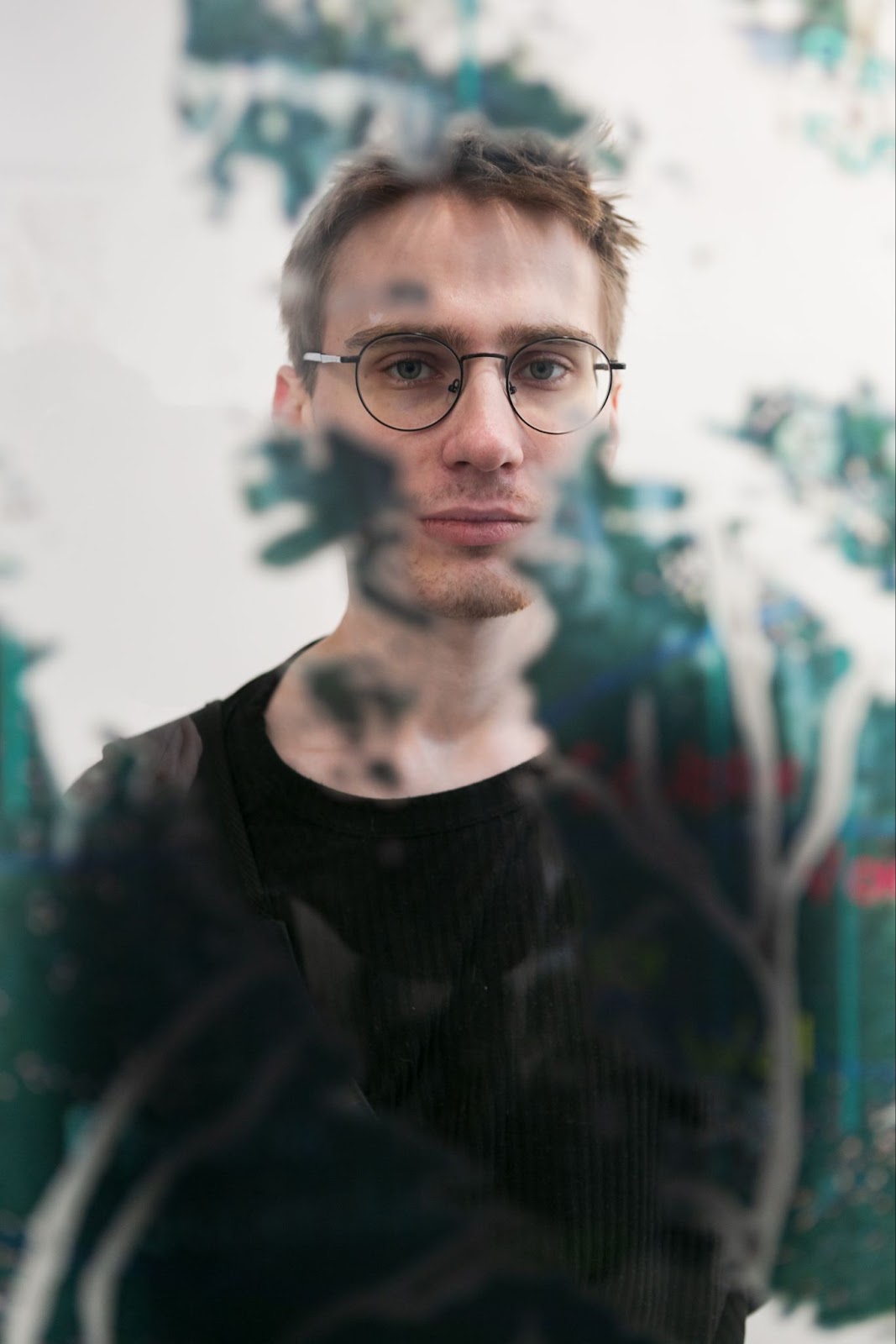
Gustavs Voldemārs Lociks (b. 1996) is a new media artist based in Liepāja, who in his creative process works with media processing and generative tools, exploring their limits and impact on the readability of data, creating abstract textures and visual/audio landscapes. He has participated in many different projects, including a musical performance in Liepāja on the roof of the Lielais Dzintars concert hall, at the Skaņu Mežš festival of unfamiliar music as a technical assistant in artificial intelligence generated media (synthetic media) in Gint Gabrān's personal exhibition, Final grand opening at the Dubulti Art Station, and on his own in the solo exhibition, Reference Metadata, in the RIXC Gallery in Riga.
Project Yggdrasil NINE WORLDS is a creative collaboration between organizations and artists from Finland, Norway, Denmark, Sweden, Latvia, Estonia and Lithuania to explore complex states of entanglement and multitude found in ancient architecture of Norse cosmology.
Supported by:


Participating artists: Anna-Karin Berglund (Sweden), Simone Ghetti (Norway), Petri Kuljuntausta (Finland), Jacob Fosgrau (Denmark), Gustavs Voldemārs Lociks (Latvia), Joonas Siren (Finland), Anni Nöps (Estonia), Daina Dieva (Lithuania), Sarah Badr (Latvia)
Enter exhibition here: yggdrasil9worlds.xyz
(to fully experience an immersive audio effect please use headphones)
(to fully experience an immersive audio effect please use headphones)
Asgard
Asgard re-imagined by Anna-Karin Berglund from Sweden is the home of the Æsir, a ruling class of deities that includes Odin, Frigg and Thor. Snorri Sturluson writes that “Asgard is a land more fertile than any other, blessed also with a great abundance of gold and jewels.” The world is surrounded by an incomplete wall, attributed to a stone mason that Thor struck down when the gods learned he was a Hrimthurs in disguise.Asgard is also the location of Valhalla “hall of the slain”, an enormous feasting hall ruled over by Odin. In Valhalla, the dead join the masses of those who have died in combat known as “Einherjar” as they prepare to aid Odin during the events of Ragnarök.
Behind the name AKB resides instrumentalist Anna-Karin Berglund from Gävle, Sweden. Her debut album ”Marianergraven” was released on February 28th 2020 (on Lamour Records) and it is her own take on the ambient genre, with melodies moving slowly, forming a menacingly areal atmosphere, where the soaring laments are able to float freely across the sonic panorama. The musical origins of this album comes from an avid fascination with the ocean and its secrets. The idea of how the pressure and darkness of the depths may sound and the unknown mystery attached to the Pacific abyss of the Marianas trench evokes both a calmness and a breathtaking feeling of bottomlessly sinking into the darkness way down deep. She utilizes the electronic tonalities from syntheses, loops and effects to create a slowly growing and floating ambient structure, which is both melodic and dissonant combined.
Vanaheim
Vanaheim, re-imagined by Simone Ghetti from Norway, is the home of the Vanir, a group of gods associated with fertility, wisdom, and the ability to see the future. No descriptions are given for Vanaheim but it is assumed to be a fertile and pleasant realm of magic and light. Simek writes, “The Vanir are in particular fertility gods who were called upon for good harvests, sun, rain, and good winds especially by the agrarian population, and for favorable weather conditions by the seafarers and fishermen” (350). Freyja – one of the most popular Norse deities - presided over her own realm of the dead somewhere in Asgard called Folkvangr (“Field of the People”) which was quite probably as pleasant as Vanaheim, her home realm.
Simone explores textures that lay at the intersection between harmony, dissonance and noise. His music takes the form of long pieces that evolve over time and create a space where the listener is challenged to establish their own relationship with sound. Each project takes its initial starting point from a framework that is established ahead of time. The framework consists of a limited set of tools: electronic and/or acoustic instruments. Through an iterative process centered around improvisation, the limits of the framework are tested to develop a vocabulary of textural sounds and gestures. Recordings of the improvisations form the raw materials. Using a subtractive process, the recordings are threaded together to delineate the presented work.
Simone began studying piano at age four. In high school he taught himself to play guitar and electric bass. He received a Bachelor's degree in Arts with a focus on classical piano. During graduate studies in architecture, he began experimenting with a 4-track cassette recorder and a few instruments. Curiosity led the way in exploring music, sound and recording techniques that form the basis of his artistic process. Simone has played in a number of small bands and released music under a range of pseudonyms. In 2020, Simone began releasing music under his own name. Between 2020 and 2022 he has released three albums. His last album, Strata, was released both digitally and on cassette by Case Records in Oslo, Norway. Simone is currently based in Bergen, Norway.
Álfheim/Ljósálfheimr
Álfheim re-imagined by Jacob Fousgrou from Denmark, is loosely translated as “Land of the Elves” or “Elfland” and as the name suggests, is home of the Jósálfar light elves ruled by the Goddess Freya. Text describing Álfheim is scarce, but the elves themselves have been mentioned in a poem as more “beautiful than the sun”. Alfheim also exists in the heavens, not far from Asgard, and was the home of the light (or bright) elves and, after Snorri, all the elves. It was presided over by the Vanir god Freyr who was one of the hostages sent from Vanaheim to Asgard at the conclusion of the war. The elves are magical beings, bright and beautiful, who inspired the arts, music, and creativity in general. Scholar John Lindow (and others) has noted that Alfheimar was the geographic locale between the mouths of the rivers Gota and Glom at the border between Sweden and Norway and that people from this region were considered “fairer” than those in other places. The mythological Alfheim is therefore thought to be inspired by this region but this claim has been challenged. The realm is not described clearly in Norse literature but, owing to the nature of the elves, is thought to be quite lovely.
Jacob Fousgrou aka jjjacob is a Copenhagen-based artist who has set out to explore the implications of electronic music on a personal and societal level. His sincere endeavors into his artistry began in 2017 during his rehabilitation period after getting a stroke with severe physical and mental consequences, in which music became a self-therapeutic tool to process emotional material. In the tension between the intimate and emotional on one side and the violent and chaotic on the other, jjjacob's compositions flourish as the soundtrack to some forgotten dream world. Through sound collages of distorted samples, grandiose synth melodies, and percussive beats, he portrays his reflections about himself and the world around him in the nonverbal ways of music. And even though his style ranges from meditational ambient floaters to aggressive club-inspired bangers, he has found his personal blueprint for sound and aesthetics.
Niðavellir/Svartálfaheimr
Niðavellir, re-imagined by Finnish artist Joonas Siren, translates as a “new moon” or “the wane of the moon” and is the realm of the Dwarfs, a race of master smiths and craftsmen who reside underground working the mines and forges. (Text also associates the realm to that of the black/dark elves). The realm of Nidavellier/Svartalfheim was below Midgard, deep in the earth, and the home of the dwarves who toiled there at their forges. It is a dark, smoky, place lit only by the fires from the forge and the torches on the walls. The gods seem to have decreed the realm of the dwarves based on their origin as given by Snorri in the Gylfaginning.
Next, the gods took their places on their thrones. They issued their judgments and remembered where the dwarves had come to life in the soil under the earth, like maggots in flesh. The dwarves emerged first, finding life in Ymir's flesh. They were maggots at that time, but by a decision of the gods they acquired human understanding and assumed the likeness of men, living in the earth and the rocks.
The dwarves were associated with craftsmanship and magic. They created Thor's hammer Mjolnir and Odin's spear, as well as the god Frey's magic ship which can be folded up and carried in his pocket. They are also responsible for the Mead of Poetry which Odin steals from the giants and gives to the gods who then inspire poets, through drink, to create their verse.
Constantly mutating rhythms and sharp digital textures shape the sound of Forces, an electronic music project of Finnish Interdisciplinary artist Joonas Siren. Different live-coding and processing techniques are used to make dense atomized swirls; electronic and sometimes chaotic abstract oceans of sound. Forces' music has been released on Infinite Machine, Gin & Platonic, Genot Centre, Conditional and Bio Future Laboratory.
Muspelheim
Muspelheim, re-imagined by Estonian artist Anni Nöps, is a realm of fire and was the first elemental world to emanate from the primordial void of Ginnungagap. The world is ruled by Surtr, a jötunn giant who plays a major role during the events of Ragnarök where the flames that he brings will engulf Midgard. Muspelheim is the primordial realm of fire, according to Snorri, which was instrumental in the creation of the world. The Fire-Giant Surtr lives in this realm and will emerge at Ragnarok, the twilight of the gods, to destroy Asgard and everything else. Scholars in the modern day, however, disagree with Snorri's interpretation and believe that Muspell was originally a giant from a fiery world whose only function in original Norse mythology was the part he would play at Ragnarok.
John Lindow, for example, notes how, “in eddic poetry, Muspell is associated with groups, Muspell's peoples and Muspell's sons. Both refer to the hordes of evil beings that will invade the world at Ragnarok”. Simek agrees with this, citing Muspell as most likely the name for a giant and meaning roughly “the end of the world”. As with many of the original Norse concepts, however, Snorri's interpretation changed how Muspell or Muspelheim was originally viewed and for the past few hundred years it has been understood as a place of fire, not an entity.
Anni Nöps is a sound artist, electronic composer from Estonia. Her sonic palette is visceral, interlacing ghostly drone, floating melodies, hard hitting percussion and tactile noise. She has performed and presented her sonic works at arebyte gallery (London), FIBER Festival (Amsterdam), Sonic Acts Festival (Amsterdam), Rewire Festival (the Hague), ICST(Zürich) and has collaborated with contemporary choreographers at ICK/Veem Theater (Amsterdam) and Stuttgart Ballet.
Midgard
Midgard, re-imagined by a Finnish artist Petri Kuljuntausta, is a realm inhabited by a race known as humans, surrounded by an impassable ocean encircled by the great sea serpent Jörmungandr. The gods of Asgard journey to Midgard via the Bifröst, a burning rainbow bridge that ends in heaven at Himinbjörg, the residence of the god Heimdallr. According to the Eddas (Icelandic literary works), Midgard will be destroyed at Ragnarök, the battle at the end of the world. Jörmungandr will arise from the ocean, poisoning the land and sea with his venom and causing the sea to rear up and lash against the land. The final battle will take place on the plane of Vígríðr, where Midgard and almost all life on it will be destroyed and sink beneath the waves. In the aftermath, Midgard will rise again, fertile and green in a new creation cycle.
Petri Kuljuntausta works as a Composer, Sound Artist, Musician and Writer-Researcher. As an artist he works with environmental sounds and live-electronics, and creates sound installations for galleries and museums. Kuljuntausta has performed music for an underwater audience, improvised with birds, and made music from whale calls and the sounds of the northern lights. Kuljuntausta has published three books on electronic music and sound art.
Over 130 electroacoustic compositions and sound works by Kuljuntausta have been published on various record labels in Europe, Australia, India, and the USA. Kuljuntausta is Adjunct Professor of Sound Art and Electronic Music and a visiting lecturer at the University of the Arts Helsinki and Aalto University Espoo.
Hel
Hel, re-imagined by a British-Egyptian artist and composer based in Riga Sarah Badr, is also referred to as “Helheim '' or “The Realm of Hel”. It is an underworld for many of the dead, ruled by the deity “Hel”. Unlike the Christian form of hell, this Norse underworld is more a continuation of life elsewhere, neither a place of eternal bliss nor one of endless torment. Hel (sometimes known as Helheim) is a dark, gloomy realm presided over by Hel, daughter of Loki, and sister of the Midgard serpent and Fenrir the wolf. When Loki's children were born, Odin knew they would cause trouble and so sought to place each one where it would do the least harm. He placed the Midgard serpent in the seas which surround the world, had Fenrir chained up, and threw Hel into a dark realm beneath the roots of Yggdrasil. This realm was then surrounded by a wall with only one gate and could only be reached by traveling downhill on a long, long path (known as Helveg — the way or road to Hel) and crossing a dangerous river of weapons.
Hel herself is depicted as a giantess, glum and brooding. For reasons which are unclear, her realm became associated with the souls of the dead which did not die in battle and, initially at least, those who died from disease or old age. In time, it became the most populous realm of the dead and most people who died were thought to travel to Hel's dark realm where they wandered in a kind of twilight but, otherwise, did more or less what they had done while alive. Determining who went to Hel's realm or why is not easy as the great hero-god Baldr, among others, is said to have gone to Hel when, considering his status, he should have gone to Valhalla.

Sarah Badr is a British-Egyptian artist and composer based in Riga. She explores emergence in nature and nascent technologies through building complex systems for graphics and audio generation. Being a classically trained multi-instrumentalist who became fascinated by experimental music later in life, her work fuses together synthesis and manipulation, live sampling, field recordings, and improvisation to create immersive experiences that transcend both genre and geography. She is an Oram Award recipient for innovation in sound, music, and related technologies. Her critically acclaimed album, Excision After Love Collapses, marks nearly a decade of independent, self-published work.
Niflheim
Niflheim, re-imagined by a Lithuanian artist Daina Dieva, is translated as “Abode of Mist” or “Mist World”, is a realm of primordial ice and one of the first to emanate out of Ginnungagap in the creation story of the Yggdrasil tree. The word “Niflheim '' is only found in the works of Snorri and in the Hrafnagaldr Óðins. Niflheim, along with Muspelheim, is the oldest of the nine realms, the primordial land of ice, mist, and snow, from whence all life began. Snorri equates Niflheim with Niflhel which gave rise to his understanding of Niflheim as the location of Hel's realm. If Niflhel did exist in Norse cosmology prior to Christianity – as it seems to have - there is no mention of it in Niflheim and it was probably an abode of the dead comparable to Tartarus in Greek mythology or the later depictions of Hel: a dark, dreary place where the souls of the dead are confined. It may have been located beneath Niflheim. All these nine realms coexisted, operating together, and would do so until the day of Ragnarok. Niflheim, however, has nothing to do with the realm of the dead per se. It is a cold and misty realm where no one lives, not even the Frost Giants. Odin is said to have thrown Hel into Niflheim and to have then given her power over the dead and the lives of those in the Nine Realms but it is thought that she would have passed through Niflheim and into Niflhel (which just means “dark realm of Hel”) where she then ruled.
Daina Dieva is a performance artist, musician, sound designer, curator, translator, filmmaker and a screenwriter. She’s fluent in six languages, so in her music she often explores various forms of communication and tackles a wide array of topics that vary from notions of individual or collective identity, through to destruction, the balance of power and the limits of the human body. Her performances resemble a journey, a ritual of private transformation. In her music, Daina Dieva creates reverberating, atmospheric soundscapes, emerging not only out of electronic media but from acoustic sources too. She samples vocals and uses the recordings of the surrounding world, which she later incorporates into a deep drone sound aesthetic and creates sound blocks of dreamlike dark ambient and post-folk.
Jötunheimr/Útgarðr
Jötunheimr, created by Latvian artist Gustavs Voldemārs Lociks, is the homeland of the Jötnar, the giants in Norse mythology. In the Eddas the realm is described as having dark forests and mountain peaks where winter never eases its frosty grip. It was here in Jötunheimr that Odin sacrificed an eye in exchange for wisdom at the well of Mímisbrunnr. Jotunheim (sometimes referred to as Utgard) is the realm of the giants and Frost Giants and is located near both Asgard and Midgard. Jotunheim/Utgard was considered beyond the realm of order, a primordial place of chaos, magic, and untamed wilderness. Loki, the trickster god of mischief, came from Jotunheim but lived in Asgard. Jotunheim was considered best avoided but there are a number of tales involving gods of Asgard purposefully traveling there.
It was separated from Asgard by the river Iving, which never froze and was difficult to cross, but Odin traveled to Jotunheim to Mimir's well of wisdom and Thor also went there to the stronghold of the giant Utgarda-Loki. Anything could happen to a person in Jotunheim as the tale of Thor and Utgarda-Loki makes clear: nothing Thor experiences on his journey is what it appears to be and, at the end of the story, the stronghold and everyone in it disappears.
Gustavs Voldemārs Lociks (b. 1996) is a new media artist based in Liepāja, who in his creative process works with media processing and generative tools, exploring their limits and impact on the readability of data, creating abstract textures and visual/audio landscapes. He has participated in many different projects, including a musical performance in Liepāja on the roof of the Lielais Dzintars concert hall, at the Skaņu Mežš festival of unfamiliar music as a technical assistant in artificial intelligence generated media (synthetic media) in Gint Gabrān's personal exhibition, Final grand opening at the Dubulti Art Station, and on his own in the solo exhibition, Reference Metadata, in the RIXC Gallery in Riga.
Project Yggdrasil NINE WORLDS is a creative collaboration between organizations and artists from Finland, Norway, Denmark, Sweden, Latvia, Estonia and Lithuania to explore complex states of entanglement and multitude found in ancient architecture of Norse cosmology.
Supported by: